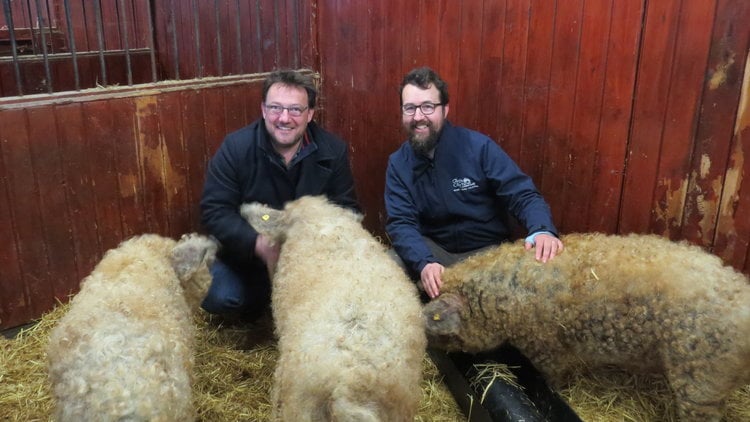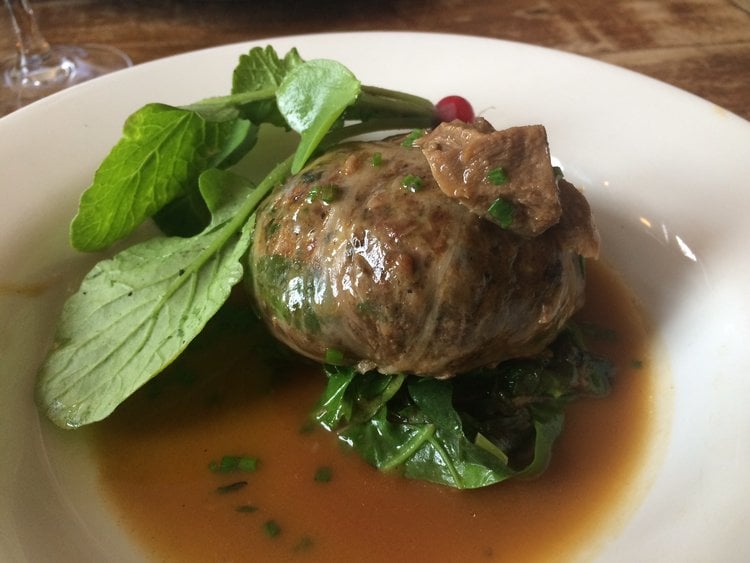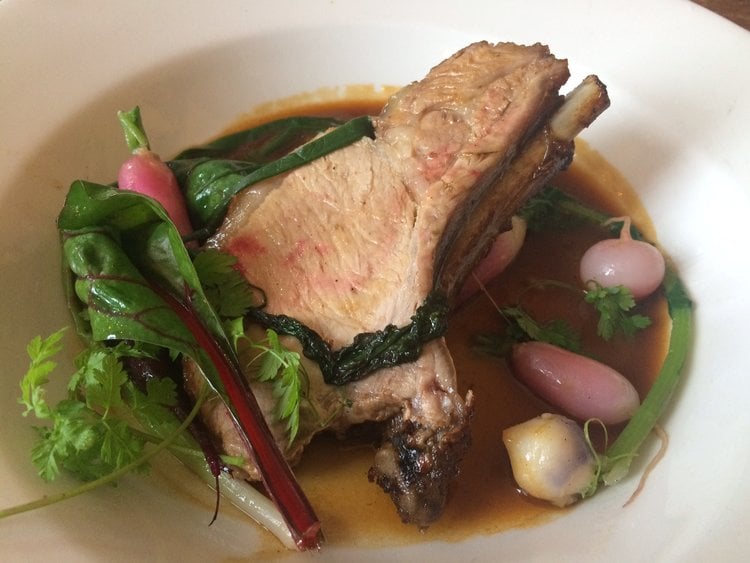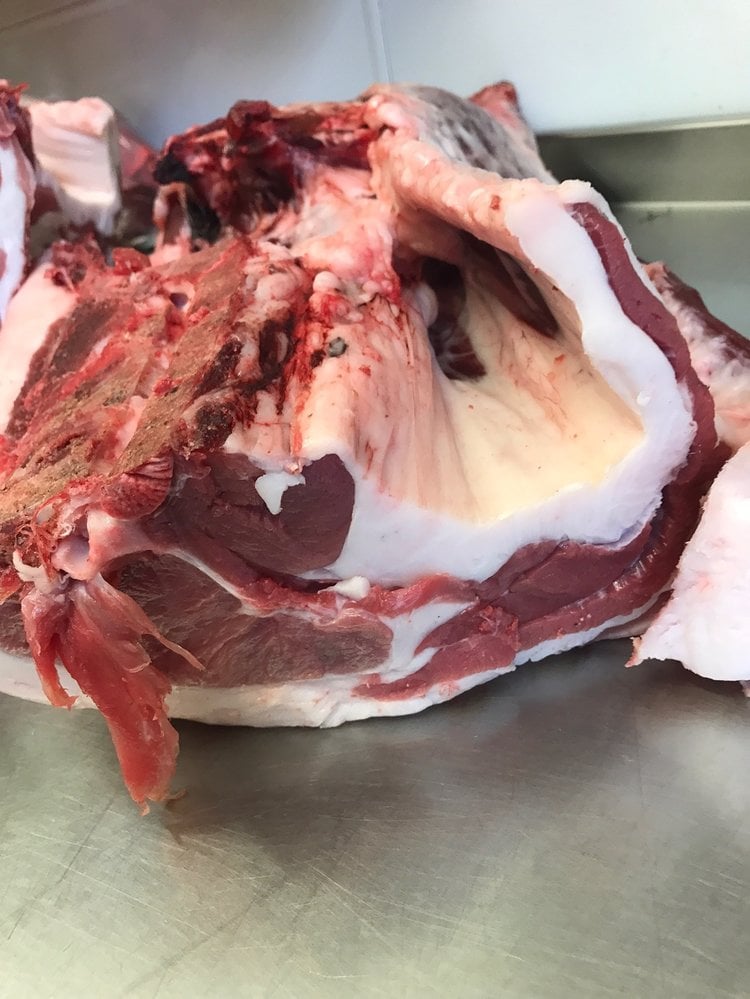
Mangalitsa pork is on the menu at l’escargot restaurants. The 5pm Dining blog trotted along to say ‘Oink!’
Readers with long memories may recall that we blogged about Fred Berkmiller’s Mangalitsa pigs back in February.
To recap, the chef patron at Edinburgh’s l’escargot bleu and blanc restaurants had been offered Mangalitsa pigs from a farmer near Aberfoyle.
After a bit of digging around on Google, Fred discovered that they are a breed of pig that originated in Hungary.
They are a rare breed.
In fact, for a while, there were only a 160 of them left in the world but renewed interest in them has seen numbers rise.
Mangalitsa micro-marbling
What caught Fred’s eye was that their name in Hungarian means ‘hog with a lot of lard’. The meat has a lot of micro-marbling – thin ribbons of fat running through the flesh – and this makes it succulent and richly flavoured.
If we were to write an advertising campaign for Mangalitsa then we might start by saying that they were the porcine equivalent of Wagyu beef.
All of which makes this pork very attractive for a chef like Fred.
For about the last year or so, Fred has been buying Mangalitsa piglets from the Aberfoyle farm and rearing them on Gorgie City Farm.
Josiah Lockhart, the General Manager of Gorgie City Farm, is a man obsessed with pigs. If you want to speak in depth about cloven and non-cloven hoofs, he’s your man.

After a long and happy life of sixteen months under the watchful eye of Josiah, the most recent batch of pigs travelled from Gorgie to the abattoir. Most commercial pig breeds go to slaughter at five months. A longer, slower rearing process produces more flavour.
A few days later, the carcasses arrived at l’escargot blanc where Fred and his team broke them down into different cuts of meat.
For the last three years, l’escargot restaurants have only bought whole carcasses and butchered them themselves.
Crisp, savoury fat
Last night, the chef served up the Mangalitsa.
We started with caillettes, a French version of faggots or offal meatballs wrapped in caul, the fatty membrane surrounding a pig’s stomach.
This may all sound a little anatomical but is in keeping with Fred’s nose-to-tail eating philosophy.
The caillettes were juicy, rich and slightly peppery.

A roast rib rack served with its own juices was the main focus of the meal. This was firm and slightly sweet. Most of the fat had rendered, keeping the meat moist.
The remaining fat around the exterior of each chop had been caramelised and was crisp and deeply savoury.
If you normally eat supermarket pork chops then Mangalitsa is a whole new ball game.

Mangalitsa on l’escargot menus
If you want to try the pork, it is on the menu at both l’escargot bleu and blanc now.
When we started speaking to Fred about Mangalitsa back at the beginning of the year, he predicted that it would go from being unheard of to highly sought after.
Earlier this week, one of the Great British Menu finalists used Mangalitsa bacon in one of their dishes. We think you might be hearing a bit more of this particular porker.
Fred plans to start a Mangalitsa breeding programme at Gorgie City Farm.
It’s good for the farm as the Mangalitsa look like woolly pigs as imagined by the Muppets. Kids love them. Just as importantly, rearing Fred’s pigs allows Josiah to produce the farm’s own cross-breed pigs and sell their high quality meat at an affordable price.
Everyone’s a winner.
Rearing his own pigs is part of a wider aim for Fred and l’escargot restaurants. Within two years, he aims to be fully sustainable.
Already, much of the herbs and vegetables used in his restaurants grow in a walled garden which Fred cultivates on the outskirts of Edinburgh.
Rearing his own Mangalitsa is the next step.
‘If you want to eat well and know what you are eating then it is best to grow it yourself,’ he says.
New Scottish charcuterie producer
Before we sign off, we’ll make brief mention of East Coast Cured.
A new charcuterie business based in Leith, Fred has asked them to make some charcuterie for his bar à vin.
We understand that East Coast Cured products are already being used in the city’s more starry restaurants.
Watch this space.

